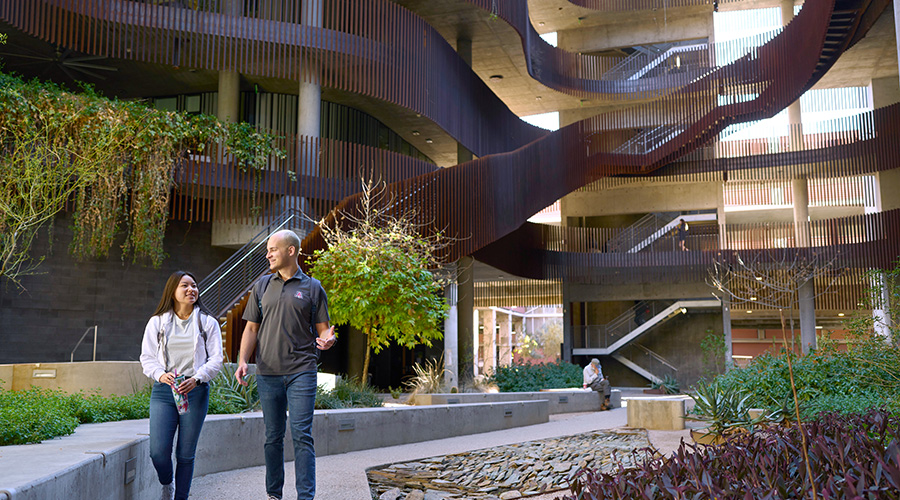Old Buildings, New Life
Historical facilities require managers to carefully blend facilities character with 21st century technology
For many reasons, institutional and commercial organizations treasure their historic buildings. The buildings educate people about history, help organizations create an image in their communities, and, most often, feature beautiful architecture.
For maintenance and engineering managers with these organizations, these buildings offer a unique set of challenges. In planning and carrying out historical renovations, managers team with architects and contractors to ensure the facilities meet the criteria that will earn them a spot on the National Register of Historic Places.
Aesthetic Appeal
Perhaps the biggest challenge is maintaining the integrity of historic buildings while incorporating energy-saving measures and meeting accessibility and fire-code compliance requirements, says Robert Vaughan, director of capital planning and management at the University of Vermont. Vaughan is involved in renovating the university’s 438 College Street building, a 10,000-square-foot facility built in 1908. Scheduled for completion in July, the nearly century-old building should soon be added to the National Register.
Before renovating such a facility, the renovation team must identify building characteristics that it wants to preserve or restore.
“We might try to restore finishes to what they were when the building was built,” says Rich Robben, director of maintenance and engineering at the University of Michigan, who has been involved in renovating several campus buildings now on the National Register. “We might try to find the same type of finishes and paint colors that were in vogue at the time. Or we might try to find the same type of wall coverings that we see in the older photographs of the building and restore them to that state.” In some cases, organizations retain the building’s mechanical systems.
“In order to keep some of the integrity of the building, we’re keeping some of the radiators in tact and operational,” Vaughan says. “In another building, we would have ripped out the radiators.” Preserving a building’s historic character often dictates all other elements of the project.
“One of the things we said as an objective was not to reconfigure anything, not take down any walls or build any new ones,” Vaughan says. Because preserving the building’s interior was a top priority, the university needed alternative measures to meet occupant needs. Planners addressed some of those needs by renovating the basement level into conference rooms.
In many cases, managers also must ensure the finished project meets building codes regarding accessibility and fire safety while maintaining the structure’s aesthetics.
In the case of the 438 College Street building, Vaughan says, “We had to build a 3,000-square-foot addition on the back of the building to accommodate ADA and fire-code requirements.” The addition incorporates an elevator, a fire-stair system and accessible restrooms.
When working with officials who determine a buildings’ eligibility for the National Register, managers need a clear understanding of acceptable building modifications, says Bill Sullivan, director of facilities and engineering at Newton-Wellesley Hospital in Newton, Mass. Sullivan has been involved in renovations of hospital buildings listed on the National Register.
“It’s all about maintaining the integrity of the building,” he says.
Saving Energy
Early in the planning process, organizations also need to identify goals related to energy efficiency and environmental impact.
For example, the University of Vermont wants all of its buildings undergoing major renovations, including historic facilities, to earn certification in the U.S. Green Building Council’s Leadership in Energy and Environmental Design for Existing Buildings (LEED-EB) program.
Vaughan is confident his project will earn historic-preservation status and LEED-EB program’s certification, but it will be tough.
“We achieved LEED-EB certification for one of our residence halls that was built in the 1960s,” he says, adding that it was much easier to meet the LEED-EB criteria in that facility than in the historical building.
“In the residence hall, we changed the windows without thinking about it,” he says.
Vaughan needed to consider other options to maintain the historical status of the 438 College Street building. The university’s historical preservation office would prefer to save the building’s original windows rather than replace them with fiberglass-insulated windows.
“That goes against everything that we are trying to do here, especially the energy-conservation aspects of LEED,” he says. “It puts us in a mild conflict with trying to do the right thing from an energy standpoint and still respecting the historical preservation criteria.” The project team met with members of the preservation office to discuss the window issue.
“We haven’t gotten the official results back from the meeting, but it looks like they are going to endorse the windows that aren’t fixed to become insulated glass, and put interior storms on those that are fixed.”
Expect the Unexpected
Unlike most new-construction projects, historical renovations often hold surprises.
“There are a lot of little things that can creep up and get you,” Robben says.
Adds Vaughan, “You might open up a wall and see that there is no real structure. You have to think on your feet on how you are going to deal with these situations, whereas you don’t have those problems in new construction.”
Robben’s department uncovered a surprise during a renovation of the university’s Museum of Art, a facility in the central campus’ historic district that is on the National Register. The problem began about 30 years ago when the university added air-conditioning to the facility.
“The building wasn’t built to be air conditioned,” Robben says. As a result, condensation formed in walls. The department discovered the problem when the university decided to add an extension.
“We saw that a lot of the underlying structural metal in the building had been damaged by corrosion due to this condensation,” he says. “It was something that we had to address when we did the extension onto the building.”
Hazardous Materials
Hazardous-material abatement can raise renovation costs considerably, so it is critical that managers identify all such materials early in the planning stages.
“You have a lot of hazardous material issues that you have to deal with during the demolition part,” Robben says. His department works with the university’s department of occupational safety and environmental health in uncovering such materials.
“One of their charges is to know what is hazardous within our buildings, whether it is a jar of chemicals, lead paint on the walls of a building, or asbestos in a machine room or spackle,” he says. “So when we begin a project, we start with their database, and we know ahead of time where we can expect problems. We’ll go in and do with them a more detailed survey for the areas that are going to be impacted by the project so we can put together the necessary construction documents and have those areas remediated the proper way.” Despite extensive efforts to uncover hazardous materials before renovation work begins, unexpected issues arise when workers begin their work.
“You might open a wall that you didn’t think has any hazardous materials and be very surprised to discover that you do,” Robben says. As another precaution to avoid such situations, Robben says one member of the university’s occupational safety and environmental health works side by side with department members.
“When I sit with my department heads, he is there as well,” Robben says. “He can talk about any issues that he is finding and can hear about our plans. He works very closely with our in-house crews whenever we need to do any remediation.”
For more information on the National Register of Historic Places, visit www.cr.nps.gov/nr.
Transplanting History
Some organizations go to extremes to preserve their historic buildings. Take Newton-Wellesley Hospital in Newton, Mass. Rather than demolish a 100-year-old building to make room for a new emergency department, the hospital moved the structure, Ellison Hall, about 220 feet. It now is closer to the three other buildings in the Newton Cottage Hospital Historic District listed on the National Register of Historic Places.
The big move of Ellison Hall took place in September 2005. A contractor lifted the 890-ton building using 28 hydraulic jacks. The hospital decided to renovate the building’s interior. From the early planning stages, the hospital’s facilities and engineering department has been involved in ensuring the project’s success.
“The actual move of the building went much faster than expected,” says Bill Sullivan, the hospital’s director of facilities and engineering, adding that the move started at 6 a.m. and was scheduled to take several hours.
“By lunch time, the building was pretty much in place,” he says. When the building reopens this summer, it will house much-need administrative space.
“When it is decided who is going where, we will be involved,” Sullivan says. Although the building has been completely remodeled and brought into compliance with ADA standards, Sullivan suspects his department will be involved in more renovation work after the building reopens.
“We raised the building, so now we will have use of the basement, which is a big plus,” he says, adding that he anticipates the hospital will renovate the building’s new basement, which is currently empty space, to make it more useable for occupants.
— Renee L. Shroades
|
Related Topics:











